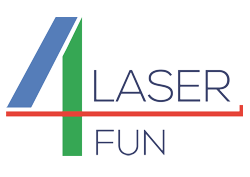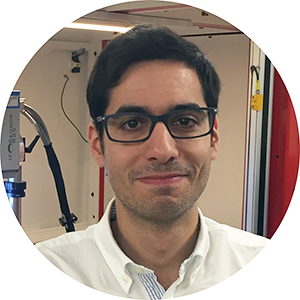Results of the work in the Laser4Fun project has been published as:
Marek Mezera, Sabri Alamri, Ward A.P.M. Hendriks, Andreas Hertwig, Anna Maria Elert, Jörn Bonse, Tim Kunze, Andrés Fabián Lasagni, Gert-willem R.B.E. Römer. Hierarchical Micro-/Nano-Structures on Polycarbonate via UV Pulsed Laser Processing on Polycarbonate. Nanomaterials 2020, 10 (06), 1184.
Abstract
Hierarchical micro/-nanostructures were produced on polycarbonate polymer surfaces by employing a two-step UV-laser processing strategy based on the combination of Direct Laser Interference Patterning (DLIP) of gratings and pillars on the microscale (3 ns, 266 nm, 2 kHz) and subsequently superimposing Laser-induced Periodic Surface Structures (LIPSS; 7–10 ps, 350 nm, 100 kHz) which adds nanoscale surface features. Particular emphasis was laid on the influence of the direction of the laser beam polarization on the morphology of resulting hierarchical surfaces. Scanning electron and atomic force microscopy methods were used for the characterization of the hybrid surface structures. Finite-difference time-domain (FDTD) calculations of the laser intensity distribution on the DLIP structures allowed to address the specific polarization dependence of the LIPSS formation observed in the second processing step. Complementary chemical analyzes by micro-Raman spectroscopy and attenuated total reflection Fourier-transform infrared spectroscopy provided in-depth information on the chemical and structural material modifications and material degradation imposed by the laser processing. It was found that when the linear laser polarization was set perpendicular to the DLIP ridges, LIPSS could be formed on top of various DLIP structures. FDTD calculations showed enhanced optical intensity at the topographic maxima, which can explain the dependency of the morphology of LIPSS on the polarization with respect to the orientation of the DLIP structures. It was also found that the degradation of the polymer was enhanced for increasing accumulated fluence levels.

